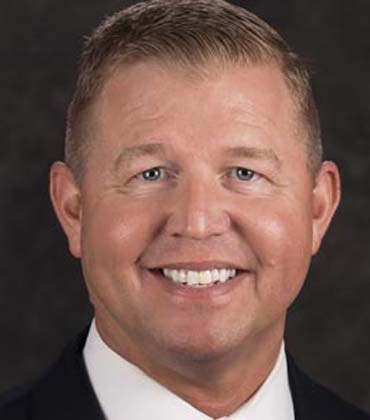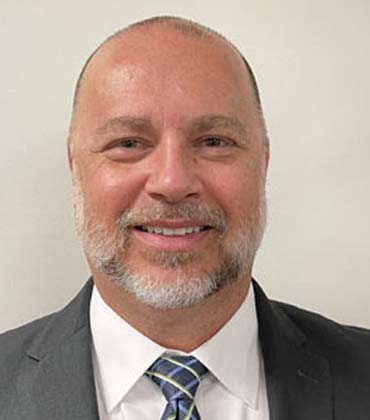THANK YOU FOR SUBSCRIBING
When Chris Lee packed his bags for Texas in 1997, he was chasing a degree and a hunch. The degree was in business computer information systems at the University of North Texas. The hunch was that his enjoyment of business concepts and his fondness for computer games might somehow blend into a career worth pursuing. At the time, that seemed like a thin connection. What Lee could not have predicted was that the path would lead to a decades-long tenure with the City of Lewisville, culminating in his role as Chief Information Officer. Lee’s academic years revealed that his instincts were partly right. He did enjoy the business curriculum, but what truly captured his interest was the technical rigor that came with the STEM side of his degree. That combination of business acumen and technological curiosity would become the foundation for his professional life. In his senior year, opportunity came calling in the form of an internship with the City of Lewisville. Lee remembers being
Modern public safety runs on data. Whether responding to large-scale emergencies or routine incidents, agencies must be able to access and share accurate, real-time information across jurisdictions, roles, and systems. However, legacy platforms were not built for this level of coordination, leaving teams struggling with fragmented data, slow communication, and siloed operations that delay response and obscure critical details. What is needed is a solution designed for high-performance, real-time, multi-agency collaboration, with data sharing and interoperability at its core. This means giving every participant, from dispatchers to field officers to records staff, access to the same live information, in the same view, at the same time, regardless of agency boundaries. To fill this need, CrossWind Technologies created Valcour Cloud Public Safety™, a cloud-native SaaS solution purpose-built to support the unique demands of sworn and non-sworn safety agencies. Designed from the ground up and informed by firsthand experience working with law enforcement agencies, Valcour enables real-time collaboration, streamlines daily operations, and breaks down data silos. It also ensures that everyone, from dispatch to records to command staff, has access to the same live information, all in one place. Beyond improving operational efficiency, it delivers reporting tools that help agencies proactively identify trends, allocate resources, and strengthen overall public safety strategy. Guided by a mission to deliver simple, effective solutions using leading-edge technology, the company prioritizes open, standards-based systems that offer high performance, efficient integration, and a low cost of ownership. CrossWind’s development and business approach focuses on selecting technologies that are both practical and powerful to ensure its solutions evolve with the needs of those they serve. .
Agility Technologies has been at the forefront of federal digital transformation for over a decade, helping agencies modernize operations, improve efficiency, and align technology investments with mission outcomes. What distinguishes Agility in the competitive government IT landscape is its dual focus: enabling large-scale modernization while rescuing high-stakes, mission-critical projects that others have failed to deliver. With a proven track record of outcomes, Agility has earned a reputation as a go-to partner for reinvention and recovery. As a certified Salesforce Summit Partner, the highest tier in the ecosystem, Agility specializes exclusively in Salesforce, MuleSoft, and Tableau implementations. This focused expertise allows the company to achieve precision and impact that broader system integrators often cannot match. The firm’s team includes over 150 certified professionals holding more than 150 industry credentials, and Agility maintains a five-star rating on the Salesforce AppExchange. Its architects—spanning technical, application, and integration domains—bring deep public sector experience and possess the security clearances required for sensitive federal environments Agility’s customer-first philosophy has been foundational since its inception. The company works closely with federal agencies to understand their missions, co-develop tailored digital solutions, and ensure those solutions meet both technical requirements and operational objectives. For Agility, success is defined by delivering high-quality results on time and within budget, while creating scalable platforms that minimize technical debt and reduce long-term operations and maintenance costs..
With AI advancement and rapidly changing public expectations, the government is poised to either forge ahead or fall progressively behind the times. Technology can be a catalyst for trust, efficiency, and better citizen experiences in a government designed to serve the public. Yet modernization is rarely linear. Tight budgets, complex bureaucracies, and fragmented components can slow progress and raise risk. Agencies benefit from pragmatic innovators who understand government realities and can integrate technologies that deliver outcomes. With the right collaboration, agencies can reduce risk, strengthen trust, and draw greater value from IT investments—advancing a resilient public sector with meaningful impact for citizens. Addressing this need is FARO Software Solutions, a product and technology partner that helps future-proof government IT by transforming legacy systems into modern, secure platforms. FARO’s approach centers on component-based design: combining known market components (e.g., hyperscale cloud, CRM, identity data platforms) with FARO solution components, proprietary IP, and unparalleled support. This composable model promotes faster delivery, lower risk, and reuse across programs, helping agencies operate smoothly and efficiently. What sets FARO apart is a library of proprietary frameworks, applications, and reference architectures engineered for public-sector transformation. These assets align technology choices with the realities of procurement, compliance, and multivendor environments. By treating systems as pre-engineered assemblies of interoperable parts, FARO helps teams modernize operations while keeping focus on measurable citizen outcomes. “We drive collaboration in complex government environments, making multiple vendors and systems work together smoothly to deliver scale and reliability,” says Mike Primavera, VP of operations. This philosophy underpins every service. As a core offering, FARO designs cloud migration strategies that limit disruption through modular, low-risk upgrades, allowing agencies to continue vital work throughout the transition. The result is a maintainable, modern system landscape. FARO replaces brittle technologies to promote rapid innovation, automation, and data-informed decision-making that improve services.

DeWayne Rose, Director of Emergency Management at the City of West Memphis

Bob Leek, Chief Information Officer, Clark County

Rolland Kornblau, Director Of Information Technology, City Of San Bernardino

David Petix, Public Safety Project Manager, City of Newport News

Dan Coldiron, CIO, City of Loveland
Public safety is evolving through the prioritization of personnel wellness, proactive retention strategies, and technology integration, thereby enhancing workforce well-being and operational effectiveness in law enforcement and emergency.
The shift to a citizen-centric cloud emphasizes personalization, accessibility, and trust, transforming digital services into responsive, inclusive experiences that prioritize user needs and foster a partnership with citizens.
Opening Doors to Smarter Governance
Governments are embracing next generation technologies to enhance and citizen services. Cloud platforms and public safety technologies are taking the center stage when it comes to accelerating digital transformation. Governments are adopting sovereign and hybrid cloud solutions. Agencies are increasingly leveraging secure, region-specific cloud infrastructures that balance data residency requirements with the scalability of public clouds. Paired with AI-driven governance and zero-trust security frameworks, these platforms are ensuring compliance and cost efficiency while modernizing citizen services. Edge-enabled government services are emerging as a key trend. By processing data closer to its source, edge computing is reducing latency in critical applications such as traffic control, emergency alerts and smart city management, improving responsiveness and reliability. Public safety solutions are also evolving through real-time AI-powered situational awareness platforms. These systems are delivering a unified operational view for first responders by integrating data streams from IoT sensors, body cameras, drones and emergency call centers,. Predictive analytics and digital twins are also being used to model crisis scenarios, enabling faster decision-making and proactive risk mitigation in emergencies ranging from natural disasters to urban crime. 5G-enabled emergency response systems are also gaining traction. Its ultra-low latency connectivity is enabling real-time video streaming from drones, leading to faster communication across agencies during crisis. This edition of Govt CIO Outlook brings recent developments in government cloud service and public safety solution arena and insights into how organizations can adapt to these disruptive trends to deliver transformative citizen experiences. It features thought leadership articles from industry experts. DeWayne Rose, director of emergency management at City of West Memphis, discusses a local government’s approach to public safety through improved emergency and interoperable communications. Rolland Kornblau, director of information technology at the City of San Bernardino, shares insights into transforming public service with strategic IT leadership. We hope this edition featuring the latest government cloud services and public safety solutions helps public organizations and government bodies to enhance operational excellence and improve their service delivery.